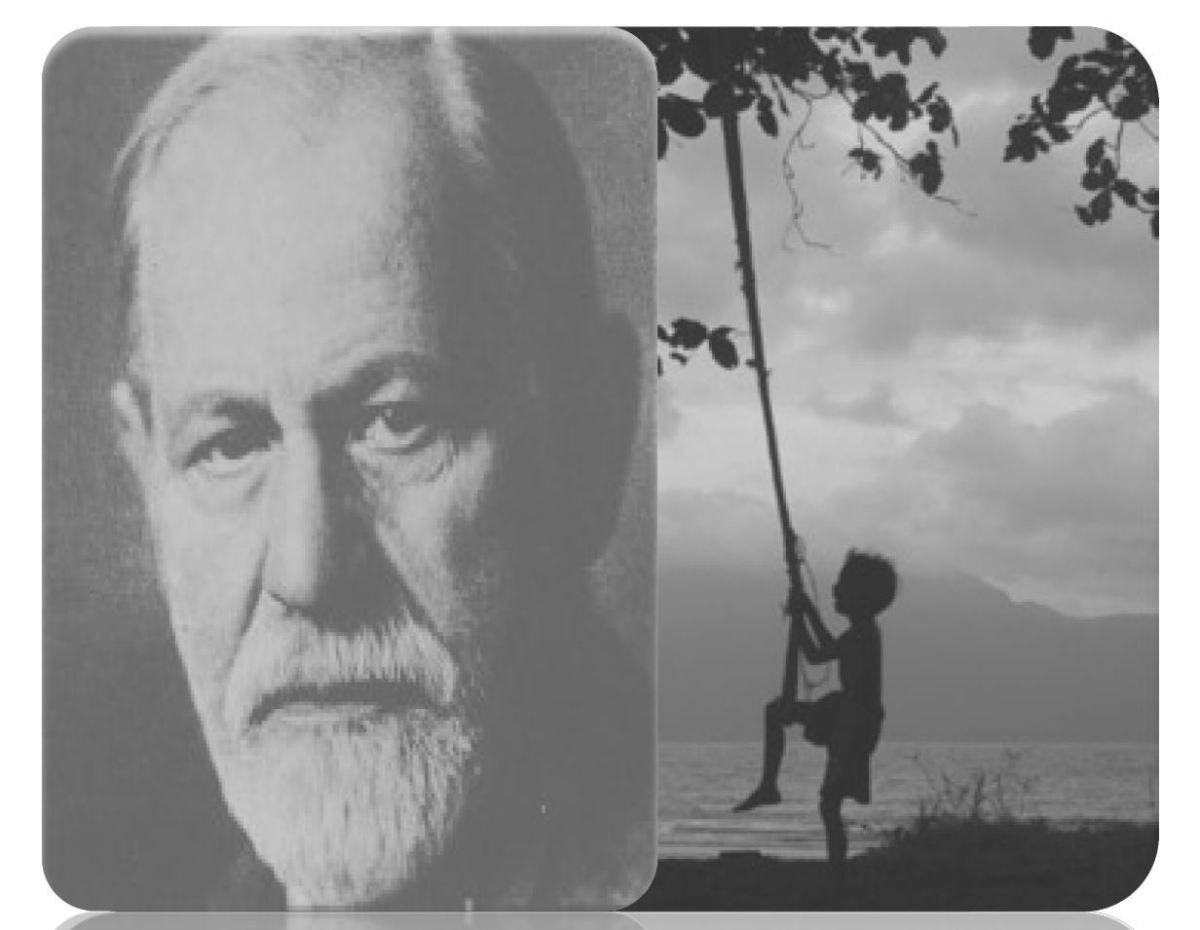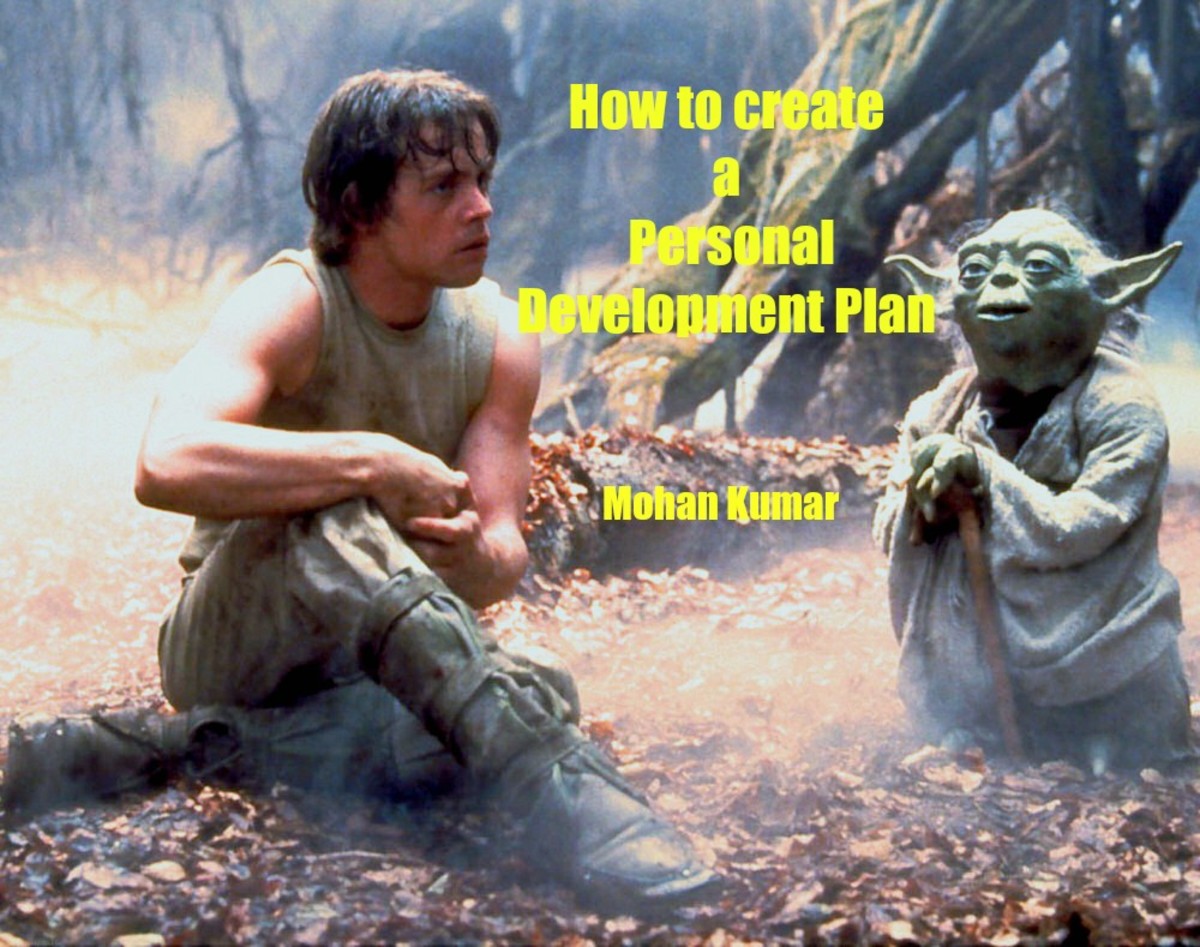Myth, Freud, and Modern Personality Development
MYTH, FREUD, AND MODERN PERSONALITY DEVELOPMENT
Concepts commonly referred to in the discussion of the definition of personality might include persona, ego, self, or personal identity. Labels and schema will vary according to theoretical gestalt. It is essential to recognize that personality theory is based on human science and requires conceptualization and methodology distinct from other natural sciences. “Useful theory should be founded on both scientific evidence and controlled, imaginative speculation” (Feist & Feist, 2006, pg. 3). The theoretical approach taken in the investigation of personality may affect the parameters of definition, therefore modern personality development issues benefit from an eclectic application of theory. Additionally, the construct of personality may be affected by purpose. “Thus the practically oriented psychometric approach to personality psychology runs the danger of becoming a technology that deliberately or unwittingly functions mainly to serve the interests of the powerful” (Pervin & John, 1999, pg 7). Personal development requires individual preferences in the design of a personality development strategy.
Personality might be described as the unique pattern of relationship, action, traits, motives, perception, and characteristics that establish the intra-personal and inter-personal dynamics of each individual. Feist and Feist (2006) identify six dimensions explored in personality theory that include determinism verses free choice, pessimism verses optimism, causality verses teleology, conscious verses unconscious, and individual personality uniqueness verses similarities. Personality theory can also be identified into categories within a similar gestalt such as psychodynamic theory, humanistic/existential theory, dispositional theory, and personality learning theory. Mixing and matching these divisions into a personalized plan provide the excitement and potential of internalized motivation.
Many theorists agree that the nature and nurture interaction with early attachment is a founding basis of personality formation. The infant/mother dyad of interactions builds within individual environments of uniqueness. Personality formation is a life-long interaction and adaptation between the interpsychic conditions of an individual and the environment. Healthy personality development, maintenance, and optimization benefit from a continual process of learning to know and understand the self and development of personalized skills of self-nurture. The individual personality is shaped through interaction with multiple influences and relationships including the biological, psychological, cognitive, social and spiritual across the life-span. “Contemporary portraits of personality provide explanations for human commonality and individual differences from a multidimensional, multidirectional, multidisciplinary, and contextual perspective” (Baltes, 1987; Caprara & Cervone, 2000; Cloninger, 1996; Newman & Newman, 2003; Santrock, 2002; as cited in Greggo, 2005, pg. 262).
The psychology of spirituality adds another unique paradigm for exploring a customized personality development plan. Resilience research suggests that those who have overcome tremendous difficulties are facilitated by accessing what has been coined a “wisdom from within” (Mills & Spittle, 2001). Traditionally, creative genius has included a high number of individuals who have dealt with what can be called periods of mental and emotional crisis (Benjamin, 2007). Ancient Christian literature such as St. John of the Cross discuss development through existential and spiritual crisis that modern psychology might consider mental illness (Hunt, 2007). Recent research in transpersonal psychology discusses the phenomena of spiritual emergence that includes passages through mental and emotional difficulties and paradoxical conflict (Adams, 1999). It is imperative for the current directions in psychological development that dialogue and research is established that includes theory and documented processes of a psychological discussion of spiritual potentials, processes, and implications. Multiculturalism demands a body of knowledge that takes into consideration the place and importance of religious, spiritual and philosophical beliefs. Personal growth is compromised when every developmental crisis is viewed as pathology instead of a developmental opportunity.
A more recent phenomena in the realm of Western Christianity and other religious organizations is the explication of ideas and concepts of spiritual gifts, strengths, common weakness on the path of spiritual maturity, and other potential areas where it would be useful and illuminating to develop a language for discussing the potential of an informative dialogue between and for the benefit of both domains of psychology and spirituality (Adams, 1999). Many of the founding fathers of psychology devoted extensive theorizing and research suggestion in the psychological understanding of religious and psychological interrelationships, including Jung, Adler, William James, George Kelley and many others. Psychology and spirituality can facilitate a mutually interdependent strategy for personal development.
The research of Olga Louchakova is a multidimensional exploration of the practical psychological implications of spirituality (http://hridayamyoga.com). In her presentation of “The Prayer of the Heart, Ego-Transcendence and Adult Development”, Louchakova (2007) discusses the distinctive process of ego-transcendence cultivated through spiritual practices that lead to the intensification of adult ego-development and characterological transformation. In a corresponding presentation of her research, Louchakova states “I rather hypothesize that the religious function of the psyche (Corbett, 1996; as cited in Louchakova, 2007a) in the post-post- modern Americans goes through change, as the experience of ego –transcendence plays a major role in the reconstruction of the postmodern split self (Louchakova, 2005b; as cited in Louchakova, 2007a). These experiences are both restorative and developmental. Because of the increasing frequency of these experiences it seems near urgent to research and legitimize them as a normal part of human life” (Louchakova, 2007a, pg. 82).
According the behavior therapy of Wolpe (1982; as cited by Morris, 2003, pp. 8-9) “neurotic anxiety (or fear) is the core of all neuroses and is established through learning. It is a product of classical conditioning or of misinformation (cognitive learning)”. Good psychoanalytic insight “plays an essential facilitating role in deconditioning and modification of habits” (Lothane, 1999, pg. 163). Psychoanalytic insight includes methods of accessing internal unconscious learning that has produced negative external symptoms. Reisner (2001) advocates a closer examination of Freud for modern times that looks beyond the more controversial doctrines in order to find a “more radical “21st-century” Freud whose, theoretical approach, to some extent, anticipated the deconstructive and postmodern perspective of the current psychoanalytic scene” (pg. 97). Instead of defining a developmental crisis from pathology alone, the change of destructive habits or problem behavior can become a clue to a need that needs to find a healthier way of fulfillment within the personality dynamic.
The work of Freud has been controversial from its inception because Freud was the “greatest Western psychologist since Aristotle” to advocate the scientific importance of both the cognitive conscious and the affective unconscious (Lothane, 1999, pg. 153). The passionate love or hate of Freud and his work remains through today because the topics he promotes have been essential arguments in the study of mind since the beginning of human history. The methods of Freud remain genius, while Freud debates easily lose sight of this genius and vitality of the method, because we are easily aroused and distracted by passionate debates over Freud’s interpretations and theory. Freud definitively for all time restored the science of the mind with the mandate that the only accurate science of the mind must include both the objective conscious and the subjective unconscious.
Freud transformed and is still transforming “traditional cognitive psychology of conscious processes into a depth psychology that created a bridge between the life of imagination, as embodied in dreams and poetry, roughly covered by Freud’s shorthand ‘primary process,’ and the life of reason, as embodied in reason, approximately covered by the term secondary process thinking” (Lothane, 1999, pg. 153). Freud’s method include the recognition of unconscious determinism in the influencing of conscious thought through emotions troubled by repressions, defenses, and transference. Contemporary practices of psychoanalysis do not have to subscribe to all Freud’s interpretations in the process of using his methods. Critics of Freud “do not often make it clear which part of the system they are criticizing: the man, the method, the myths, or the morals of the profession of psychoanalysis: it all tends to run together” (Lothane, 1999, pg. 153). The correctness of psychoanalytic interpretations requires a therapeutically safe relationship between the subjectivities of at least two individuals (Von der Tann, 2000). Interpretations of subjective matter is best described as accurate when it is in tune and resonates truth of individual experience verses being the “correct” interpretation. The beauty and therapeutic value of myth is the property of myth to allow for more than one interpretation that can be correct because it allows for multiple and diverse contextual applications with multiple perspective taking.
The understanding of the general public ideas of the meaning of myth as “make-believe, unreal, nonexistent, or false” must be contrasted to the historical meanings of myth intended by Freud (Lothane, 1999, pg. 154). “Myth is a variety of consciousness, a function of mankind’s symbolic intelligence and imagination, another way of perceiving and representing facts of reality” (Cassirer, 1944; as cited in Lothane, 1999, pg. 154). “To the Greeks, a myth was a sacred narrative explaining how the world and man came to be in their present form” (Orfanos, 2006, pg. 483). Myth provides an objective tool for exploring the realities of personal and individual subjectivity because it allows for the storyteller’s perspective to enlighten, teach, and communicate as part of a creative, healing, and mutual myth defining process of dialogue. Mythos (myth) and logos (reason) together provide a healthy unity of human being through healing the split and dissonance between cognition and affect or emotion, conscious and unconscious aspects of being.
Psychoanalysis provides a method for a process that grapples with internal clarifications between the subjective realms of “historical reality and psychic reality, fact and fantasy, trauma and memory of trauma, the counterpoint of fact and fantasy, perception and hallucination” (Lothane, 1999, pg. 160). Morris (2003) offers a modern application of the concept of myth by providing a metamodel of theories of psychotherapy as a guide to analysis, comparison, integration and use. This metamodel is based upon the structure of myth and ritual. “All psychotherapies are methods of learning” (Corsinis, 2000, pg. 6; see also Goldfried, 1988; Strupp, 1988; as cited in Morris, 2003, pg. 5), and “interventions are the learning experiences or conditions that the therapist arranges because they are presumed to change these dysfunctional personal characteristics that produce the client’s psychological problems” (Morris, 2003, pg. 5).
Morris (2003, pg. 12) provides a structure for identifying, clarifying, and integrating multiple theories in the formulation and design of treatment. The basic steps consist of:
Case Formulation (based on the myth):
1) Identify the specific psychological problems.
2) Develop hypotheses about the dysfunctional personal characteristics.
3) Develop a working model of the process whereby these dysfunctional personal characteristics give rise to psychological problems.
4) Identify the origin of dysfunctional personal characteristics.
Treatment Plan (based on ritual):
5) Negotiate treatment goals (ultimate outcomes).
6) Specify the revised personal characteristic goals (instrumental outcomes).
7) Select interventions.
The metamodel developed by Morris (2003) as a paradigm for personality development is an interesting and enlightening example in applying the possibility of theoretical integration. Psychology, myth and spirituality define the therapeutic process in the divisions of myth and ritual. Then, four theories of psychotherapy including the psychoanalysis of Freud, the person-centered therapy of Rogers, the behavior therapy of Wolpe, and the cognitive therapy of Beck are applied along each step of the 7-point process. This meta-model is generalized enough to fit according to an individual design and preference of theoretical treatment or healing strategies.
References
Adams, W. (1999, September). The interpermeation of self and world: Empirical research, existential phenomenology, and transpersonal psychology. Journal of Phenomenological Psychology, 30(2), 39-67. Retrieved May 4, 2009, doi:10.1163/156916299X00093
Benjamin, E. (2007). Art and mental disturbance. Journal of Humanistic Psychology. 48(61), 61-88.
Feist, J, and Feist, G. J. (2006). Theories of personality. New York, NY: The McGraw-Hill Companies, Inc.
Greggo, S. (2005, December). Soul origin: Revisiting creationist and traducianist theological perspectives in light of current trends in developmental psychology. Journal of Psychology & Theology, 33(4), 258-267. Retrieved October 7, 2008, from PsycINFO database.
Hunt, H. T. (2007). “Dark nights of the soul”: phenomenology and neurocognition of spiritual suffering in mysticism and psychosis. Review of General Psychology. 11(3), 209-234.
Lothane, Z. (1999, December). The perennial Freud. Method versus myth and the mischief of Freud bashers. International Forum of Psychoanalysis, 8(3), 151-171. Retrieved October 17, 2008, doi:10.1080/080370699300056130
Louchakova, O. The science of spiritual awakening: Hridayam Yoga. (http://hridayamyoga.com)
Louchakova, O. (2007, July). The Prayer of the heart, ego-transcendence and adult development. Existential Analysis, 18(2), 261-287. Retrieved May 23, 2009, from PsycINFO database.
Louchakova, O. (2007a, January). Spiritual heart and direct knowing in the prayer of the heart. Existential Analysis, 18(1), 81-102. Retrieved May 23, 2009, from PsycINFO database.
McFarlane, T.J. (2000). Quantum physics, depth psychology, and beyond. RetrievedJanuary 26, 2007, from http://www.integralscience.org/psyche-physis.htm
Mills, Roger & Spittle, Elsie. (2001). The wisdom within. Edmonton, Canada: Lone Pine Publishing.
Morris, S. (2003, January). A metamodel of theories of psychotherapy: A guide to their analysis, comparison, integration and use. Clinical Psychology & Psychotherapy, 10(1), 1-18. Retrieved October 15, 2008, doi:10.1002/cpp.351
Orfanos, S. (2006, July). Mythos and Logos. Psychoanalytic Dialogues, 16(4), 481-499. Retrieved October 15, 2008, from PsycINFO database.
Reisner, S. (2001, April). Freud and developmental theory: A 21st-century look at the origin myth of psychoanalysis. Studies in Gender and Sexuality, 2(2), 97-128. Retrieved October 16, 2008, doi:10.1080/15240650209349172
von der Tann, M., & Boening, J. (1999, January). The myth of the 'correct' interpretation. The Journal of Analytical Psychology, 44(1), 57-67. Retrieved October 16, 2008, from PsycINFO database.
Winter, D. G. & Barenbaum, N. B. (1999). History of modern personality theory and research. In L. A. Pervin & O. P. John (Eds.), Handbook of Personality (pp. 3-27). New York, New York: The Guilford Press.








